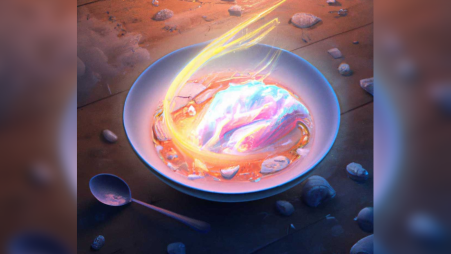DALL-E: Potential to usher in a creative revolution
DALL-E is an AI tool that produces artworks based on text instructions

Since its unveiling in April of this year, DALL-E – a text-to-image generator AI tool – has created a buzz among creative artists, designers, art enthusiasts as well as ordinary people.
Although some artists and designers are rightfully apprehensive about the potential impact of AI on the creativity, ingenuity and originality of humans, many have been training to use the technology to their advantage.

So what is DALL-E and how does it work?
In short, it is an AI tool that produces artworks based on text instructions. Just put your ideas in words and the software will turn them into a piece of art.
The concept is very basic: you type in a few words, up to 400 characters, and within a minute or less the AI will provide you with an image based on your text prompts. For example, if you type "a mediaeval knight riding a tesla in outer space", you will find representative images in that exact style.
Currently, DALL-E is the most well-known Generative Artificial Intelligence (GAI) for producing realistic visuals from language commands. While there are other GAIs, such as Midjourney AI, Craiyon, NightCafe, etc; DALL-E has become the biggest name.

In addition to creating images of extraordinarily realistic quality, it is better at understanding natural language commands. It outperforms its competitors in matters like flexibility over subjects, styles, backgrounds, locations, etc.
It will quickly provide you with dozens of renderings in response to a high-quality prompt, each of which would take a human creative artist – painter, digital artist or illustrator – hours to create.
It might be an art director's dream, he or she can have a quick look at visual ideas without spending much time or money. On the other hand, art designers might appreciate it for getting quick inspiration for ideas and models.

Furthermore, for using DALL-E, strong technical know-how is not needed unlike Adobe's notoriously difficult-to-use Photoshop. Although it is still in its beta phase, DALL-E could potentially be a completely revolutionary photo editor thanks to these capabilities.
DALL-E 2, the successor to the original version, will soon be made accessible to one million people as part of a significant beta test, according to a recent announcement from Open AI – the creators of the software.
During their first month of use, each user will receive 50 free generations, followed by 15 for each consecutive month. OpenAI is also rolling out a subscription model soon.
Importantly, users have the right to commercially use the DALL-E photos created, allowing them to print, sell or otherwise licence the images created from their prompts. According to OpenAI, users get entire rights to commercialise the images they develop using DALL-E.

Given that these AIs have acquired their knowledge of art from examining the creations of other human artists, some legal ambiguities remain that need to be thoroughly investigated in this situation. There are obvious questions about the originality of the artworks produced by AIs.
But how about the different types of art and design? Can DALL-E create logos, website templates, book covers and art forms? What will happen to the illustrators who make a living by designing?

The use of AI presents this jarring existential reality in front of every other profession, not just the field of art. While software like DALL-E might not directly replace humans, understanding and operating the software will definitely be an essential skill for anyone in the design world.
At this time, it seems unlikely that the majority of people would regularly use this sort of technology. Though it may be assumed that the usage of technology in e-commerce, social media, office, and at home will likely continue to advance in the future months and years.

DALL-E now seems to be a turning point in the development of consumer technology. The question is whether, in a few years, we'll look back on it as the start of a creative revolution or as something more worrisome.



 Keep updated, follow The Business Standard's Google news channel
Keep updated, follow The Business Standard's Google news channel
















